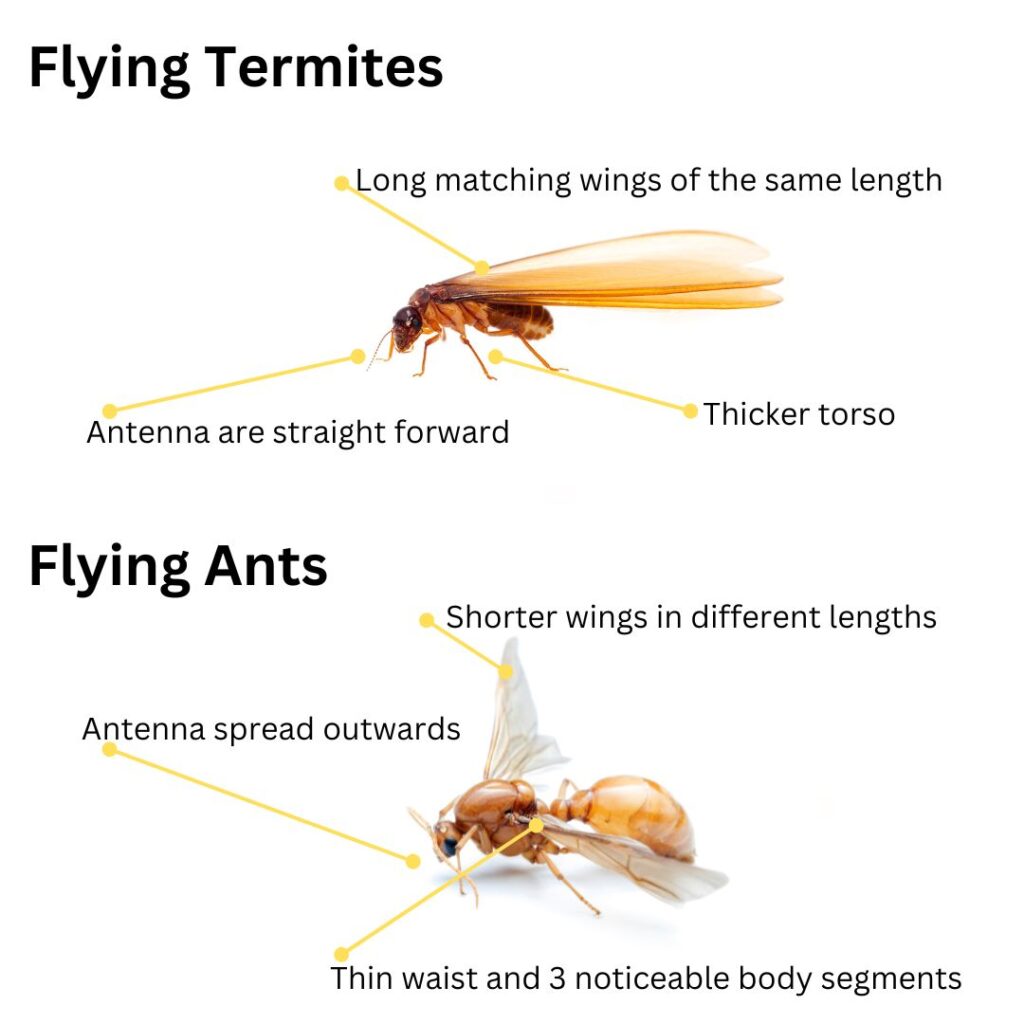Essential Insights into the Lifecycle and Behavior of Flying Termites
Flying termites, commonly referred to as “swarmers,” become particularly noticeable during the transition of seasons, especially as humidity levels rise in the spring and early summer. During colder months, these pests remain hidden, quietly consuming wood and expanding their colonies without detection. If you see these swarmers inside your home, it’s likely that termite activity has been ongoing for several months, which can lead to serious structural damage if left untreated. To protect your property effectively, it’s crucial to understand the lifecycle and behavior of termites, enabling you to implement targeted termite management and prevention strategies that can significantly reduce the risk of infestation.
The rise in temperatures combined with subsequent rainfall often triggers massive swarms of termites, sometimes numbering in the tens of thousands. Encountering such an overwhelming number of swarmers can certainly be unsettling, but it’s important to note that the likelihood of these termites successfully establishing a new colony in the vicinity is relatively low. These swarmers are naturally drawn to light, which explains why they often cluster around light fixtures in homes. By recognizing this behavior, you can stay calm and take proactive measures to protect your property from potential infestations, ensuring that you’re prepared for any situation that may arise.
The Hills District, known for its lush bushland, creates an attractive habitat for termites. As you drive along Windsor Road towards Rouse Hill, you’ll notice numerous termite mounds along the medium strip, serving as a stark reminder of the abundant food sources available to these pests in the surrounding bushland. Homeowners in this region must remain vigilant, as the close proximity to these natural habitats significantly increases the risk of termite infestations infiltrating residential properties. Regular awareness and monitoring can help mitigate these risks and protect your home from potential damage caused by these wood-consuming insects.
Effective Actions to Take When You Spot Flying Termites
Stay Calm! Your home might not be under immediate termite threat!
Discovering flying termites in your living space should lead you to take protective measures rather than inducing panic or rushing to purchase expensive termite control solutions. Here are several practical steps you can implement to ensure your home remains safeguarded against these pests:
- Schedule Regular Inspections: If it’s been some time since your last professional termite inspection, now is the perfect opportunity to arrange one. Annual inspections conducted by a licensed pest control technician are vital for early identification of potential termite issues, ultimately saving you from costly repairs and extensive damage down the line.
- Monitor Weather Patterns: Termites typically swarm on warm, humid nights, making it easier to spot them during these favorable conditions. By staying vigilant about weather changes, you can better anticipate their activity and prepare accordingly to minimize risk.
- Accurate Identification: Take careful note of the swarmers you observe—do their wings appear uniform in size? Are they flying in a distinct ‘swarm’ pattern or scattering chaotically? Are their antennas straight or bent? Identifying their body shape is also crucial, as flying ants and flying termites may look alike but possess different characteristics. Accurate identification is essential for effective management and control.

Common Mistakes to Avoid When Dealing with Flying Termites
While it may be tempting to take matters into your own hands, some actions could complicate future treatments and exacerbate the existing problem:
- Refrain from Spraying: Although spraying swarmers may seem like a quick fix to eliminate visible termites, it won’t address the underlying colony and could hinder effective future treatment strategies. It’s essential to tackle the root cause of the problem rather than just the visible symptoms.
- Avoid Sealing Exit Points: If you notice termites emerging from a hole in your walls, resist the urge to seal them off. Blocking their exit can force termites to explore new areas, potentially leading to increased damage within your home.
- Don’t Disturb Mud Trails: If you come across mud tubes or trails, do not disturb them. Interfering with these structures can disrupt a technician’s assessment and compromise their treatment plan, ultimately worsening the situation for your home.
Understanding the Termite Risk Factors in Your Home
Seeing flying termites does not automatically mean that your home is infested. However, it serves as a valuable reminder to remain proactive in your pest management efforts. An annual termite inspection by a qualified professional is your best line of defense against potential infestations. This allows for early detection and timely intervention, which is crucial for effective management. While the costs associated with preventive measures may seem like an initial investment, they pale in comparison to the expenses involved in extensive termite treatments and subsequent repairs.
Comprehensive Strategies for Strengthening Termite Protection in Your Home
Committing to regular annual termite inspections is the foundation of a successful pest control strategy. In addition to this, following the recommendations provided by your pest control technician can further enhance your protective measures, including:
- Timely refills of your reticulation system to maintain ongoing protection against potential infestations.
- If your home utilizes baiting systems, schedule regular monitoring with your technician to ensure optimal effectiveness and make necessary adjustments promptly.
- For properties lacking a termite barrier, consider investing in one to significantly bolster your defense against possible infestations.
When to Initiate Your Termite Treatment Journey: A Call to Action
There’s no wrong time to begin implementing preventive measures; however, it’s crucial not to wait until you see swarmers to take action. The appearance of flying termites may indicate that hidden damage is already occurring within your property. Taking preventive steps now can help safeguard your home throughout the year, ensuring peace of mind and protecting your valuable investment.
At So Pest Off, we are committed to equipping you with the knowledge and proactive choices necessary for effective termite protection, steering clear of fear-based tactics.
Contact us for reliable inspections and tailored, effective solutions designed to meet your specific needs.
The post Flying Termites: Explore This Essential Action Plan appeared first on https://writebuff.com.
The Article Flying Termites: Your Essential Action Plan for Control Was Found On https://limitsofstrategy.com


4 Responses
It’s fascinating how nature has its own rhythm, especially with the emergence of flying termites in response to changing weather patterns. I remember the first time I encountered a swarm; it felt like a scene from a nature documentary. However, your insights on their lifecycle really hit home. It’s intriguing to think about how these little creatures can cause such big problems!
Ah, flying termites, the unwanted plus-ones of the spring season! It’s like they’ve got their own little “bring a friend” policy. I remember last year, I opened my door just as they launched their swarm—felt like I was in a low-budget sci-fi movie! But honestly, while they’re busy turning my house into a buffet, they could at least be a bit more discreet about it.
This blog post sheds light on a topic that often goes unnoticed until it’s too late, the lifecycle and behavior of flying termites. It’s fascinating how these creatures operate mostly out of sight, yet their impact can be so significant. I remember a few years ago, when my cousin faced a serious termite infestation in her old house. She thought she was simply dealing with some harmless, annoying bugs until one day, she spotted swarmers near a window. That small sighting led to a major wake-up call – not just for her, but for everyone in the neighborhood who shared similar wooden structures.
It’s fascinating how seasonal changes can so dramatically influence termite behavior. Living in an area where humidity spikes in the spring, I’ve noticed an uptick in flying termites around my home, prompting me to dig deeper into their lifecycle. The hidden nature of their activity during the colder months really underscores the importance of preventative measures.